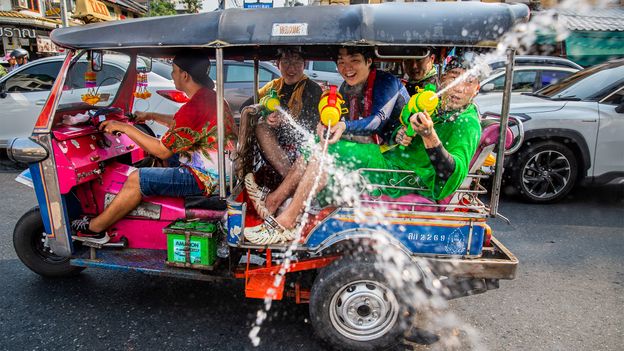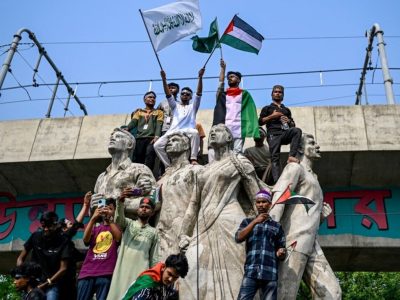“Songkran is very inclusive – the water splashing is open to everyone, although it’s always important to understand and respect the cultural boundaries,” Mongkolwongsiri cautioned. “For example, visitors must avoid throwing water on monks or elders and try not to spray water directly in anyone’s face.”
While Thailand’s cities attract the biggest Songkran crowds, Angkhasirisap says travellers venturing away from the nation’s main tourist hotspots are also likely to encounter the festival.
“Bangkok and Chiang Mai are well-known hotspots, attracting huge crowds and hosting grand celebrations,” she explained. “[However], in recent years, Thailand has made an effort to promote celebrations in all regions, [including] lesser-known provinces.”
More like this:
• A White Lotus actor’s guide to Thailand
• Koh Mak: The tiny island that’s redefining travel to Thailand
• Measuring the ‘White Lotus effect’: How TV and film locations impact travel
According to Angkhasirisap, smaller destinations have their own special twist to the holiday, with beach destinations like Songkhla and Surat Thani, being much more laidback than the party vibes found in larger cities, while provinces like Phrae, Lamphun, and Ubon Ratchathani incorporate cultural parades into the traditional festivities.
“Wherever you go, you’ll find a warm and welcoming atmosphere,” said Angkhasirisap. “It’s a truly unforgettable festival!”
—
If you liked this story, sign up for The Essential List newsletter – a handpicked selection of features, videos and can’t-miss news, delivered to your inbox twice a week.
For more Travel stories from the BBC, follow us on Facebook, X and Instagram.










